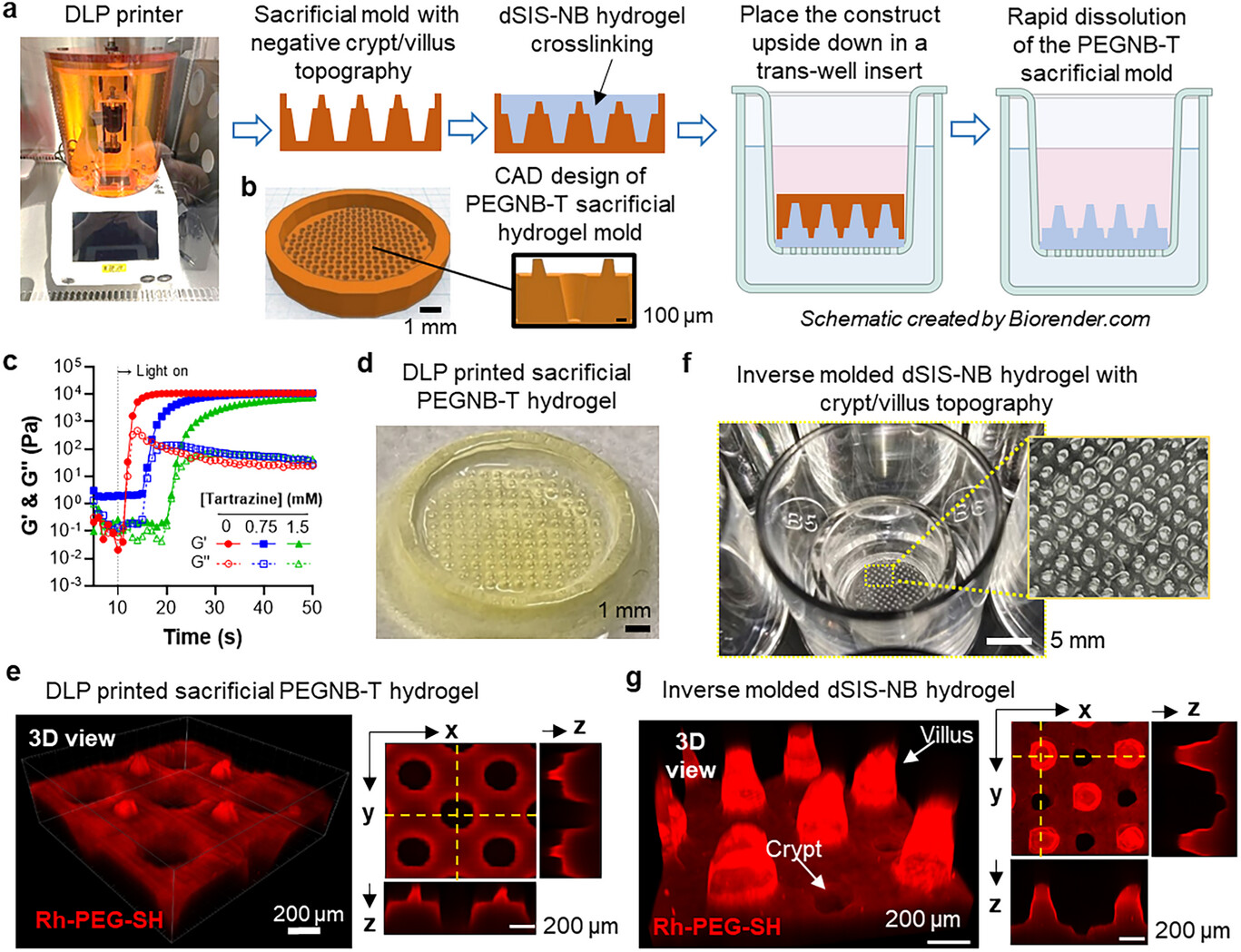Purdue researchers create engineered hydrogels that mimic the intestine's natural architecture
Researchers in the Lin Research Group at Purdue University’s Weldon School of Biomedical Engineering have developed a new biofabrication workflow to engineer hydrogels that replicate the intestine’s complex crypt and villus structures—key to studying gut biology, disease and drug transport.
The study, published in Small, was led by postdoctoral researchers Ngoc Ha Luong and Thuy Duong and PhD student Jon Bryan under the direction of Professor Chien-Chi Lin. The team’s innovation combines advanced 3D printing with decellularized extracellular matrix (dECM) materials to create a realistic model of the intestinal lining.
To replicate the complex topography of the intestinal surface, the researchers developed a specialized molding approach using advanced 3D printing techniques and custom polymer materials. They then formed a biologically active scaffold derived from intestinal tissue components, resulting in a soft, tissue-like structure that captures the characteristic features of the intestinal wall.
When intestinal epithelial cells were seeded onto the engineered hydrogel, they rapidly formed a confluent, polarized layer that demonstrated selective barrier and drug-responsive transport functions—mirroring the behavior of natural intestinal tissue.
Beyond replicating healthy tissue, the researchers used the method to model disease conditions, producing hydrogels with both intact crypt–villus regions and flattened epithelium that exhibited impaired transport. This breakthrough paves the way for more accurate in vitro systems for studying intestinal diseases and evaluating drug delivery and absorption.
This project was supported by the National Cancer Institute of the National Institutes of Health (R01DK127436).
The Lin Research Group disclosed their innovative technologies to the Purdue Innovates Office of Technology Commercialization, which has applied for patents to protect the intellectual property.
Read the full open-access paper in Small: https://onlinelibrary.wiley.com/doi/10.1002/smll.202506632

